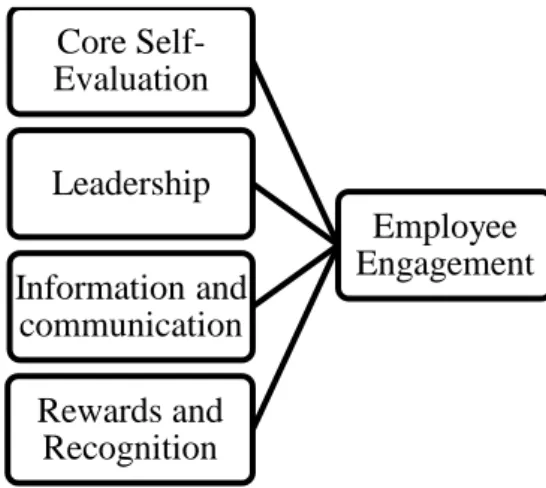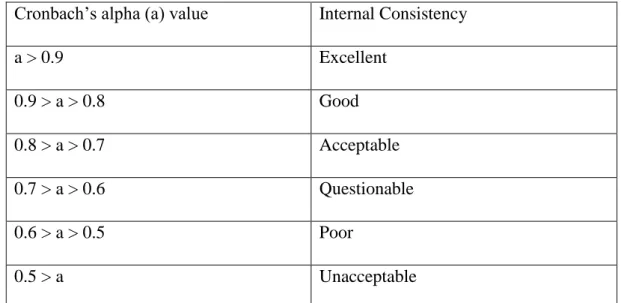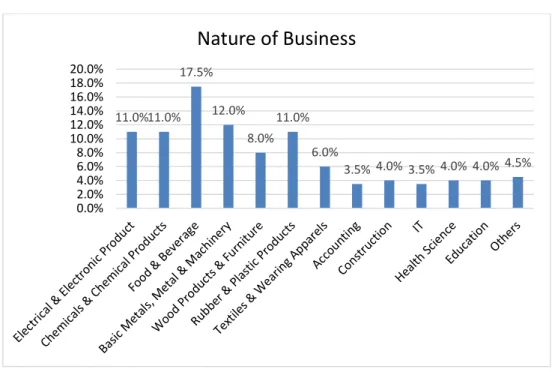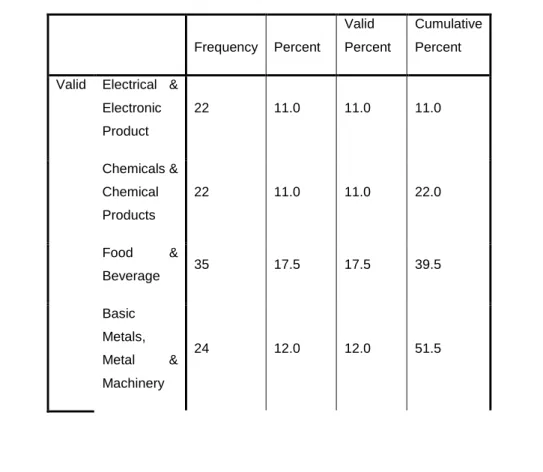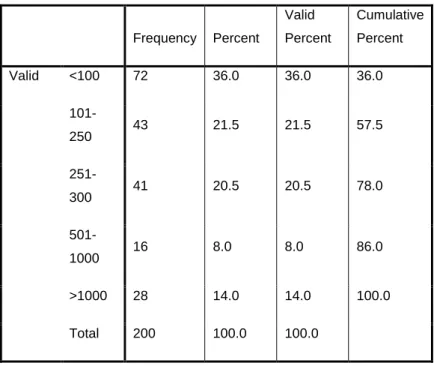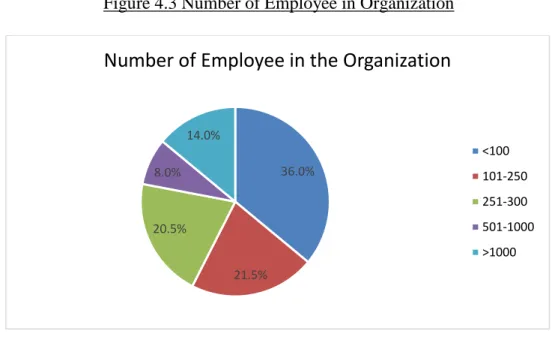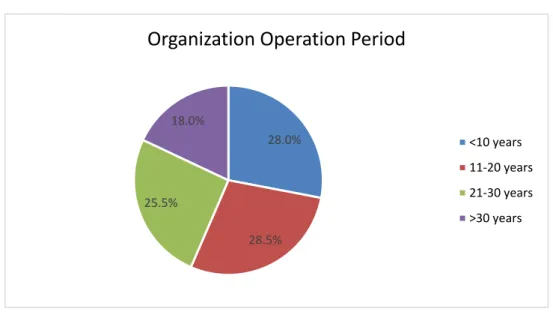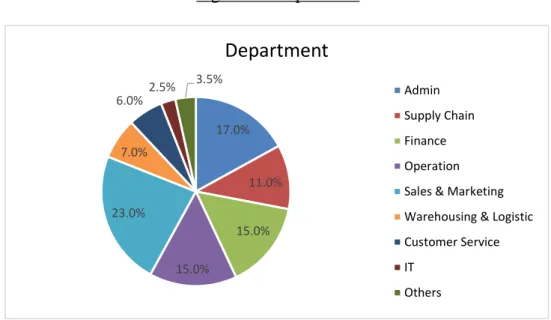Our thesis is entitled The Drivers of Employee Engagement in Multinational Enterprise in manufacturing and service industry in Malaysia. The main objective of this research was to study the relationship between core self-evaluations, leadership, information and communication and rewards and recognition in relation to employee engagement in manufacturing and service industries in multinational companies in Malaysia.
RESEARCH OVERVIEW
- Introduction
- Research Background
- Problem Statement
- Research Objectives
- General Objective
- Specific Objectives
- Research Questions
- Hypotheses of the Study
- Significant of the Study
- Chapter Layout
- Conclusion
H1: Core self-evaluation has a significant relationship with employee engagement in MNE in service and manufacturing industries. The Drivers of Employee Engagement in Multinational Enterprises (MNE) in the Manufacturing and Service Industry in Malaysia.
REVIEW OF LITERATURE
Introduction
After defining the research objective, this chapter consists of the literature review, which describes the constructs involved and reviews them through past studies by previous researchers.
Literature Review
- Employee Engagement
- Core Self-Evaluation
- Leadership
- Information and Communication
- Rewards and Recognition
H0: Core self-evaluation has no significant relationship with employee engagement in the MNE in the service and manufacturing industry. In this section, I would like to examine the drivers of employee engagement in MNEs in Malaysia.

Review of Relevant Theoretical Framework
- Kahn’s Three Psychological Theory
Conceptual Framework
Hypotheses Development
- The relationship between core self-evaluation and employee
- The relationship between leadership and employee
- The relationship between information and communication
- The relationship between rewards and recognition and
According to Danish et al. 2014), there is a direct and significant connection between self-evaluation and employee involvement. The researcher has proven that there is a direct positive correlation between supportive management and employee involvement.
Conclusion
According to research conducted by Ram and Prabhakar (2011), it focuses on the antecedents and effects of employee engagement. The result of the Pearson correlation coefficient showed that there is a positive correlation between employee engagement and rewards and recognition. According to the research conducted by Hassan, Hassan and Shoaib (2014), the result shown in correlation and regression analysis is that reward system has a significant positive relationship with employee engagement.
METHODOLOGY
- Introduction
- Research Design
- Quantitative Research
- Descriptive Research
- Causal Research
- Data Collection Methods
- Primary Data
- Secondary Data
- Sampling Design
- Target Population
- Sampling Frame and Location
- Sampling Elements
- Sampling Technique
- Sample Size
- Research Instrument
- Questionnaire Design
- Pilot Test
- Constructs Measurement
- Measurement Scale
- Origin of Construct
- Data Processing
- Data Checking
- Data Editing
- Data Coding
- Data Transcribing
- Data Analysis
- Descriptive Analysis
- Scale Measurement – Reliability Test
- Inferential Analysis
- Conclusion
In this research, descriptive research was used in the demographic and general profile of the respondent's organization. The availability of data means that data can be collected more quickly and less expensively than primary data. The respondents who were targeted in this research are MNE employees in the manufacturing and service industry in the Klang Valley.
Responses are entered into SPSS software to test the internal consistency of questionnaire items for each variable using the Cronbach Alpha coefficient. Examples of ordinal scale in this survey are age group and monthly income of the respondents. Each variable is adapted from only one source to increase the reliability and validity of the questionnaire.
Pie chart is used to represent the summary of the data collected for nominal scale issues such as the type of company, department, and gender. Reliability is the degree of internal consistency of the collected data (Zikmund, Babin, Carr & Griffin, 2013, p. 301).

DATA ANALYSIS
Introduction
Descriptive Analysis
- Respondent’s Demographic Profile and General Profile of the
- General Profile of the Firm
- Demographic Profile
- Central Tendencies Measurement of Constructs
106 respondents are related to the manufacturing industry, which is 53%, and the remaining 94 respondents are related to the service industry, which is 47%. Based on Figure 4.2 and Table 4.2, the majority of respondents are involved in the food and beverage industry at 17.5%, followed by base metal, metal and machinery industry at 12%. From Figure 4.5 and Table 4.5, the most respondents are in the sales and marketing department, namely 23%, and the least in the information technology (IT) department, namely 2.5%.
6% of the respondents work as customer service, 7% in warehouses and logistics department and 11% work in supply chain department. From figure 4.7 and table 4.7 female respondents are slightly more than males which are 56% and 44% respectively. Furthermore, there is 3.5% from STPM or foundation and the least, which is 1% from Phd holder.
This result indicated that most of the respondents agreed that leadership plays an important role in influencing employee engagement while core self-evaluation is the least important. Moreover, among all the variables, employee engagement has the highest standard deviation, which is 0.81271 and the lowest is core self-evaluation with 0.64884.
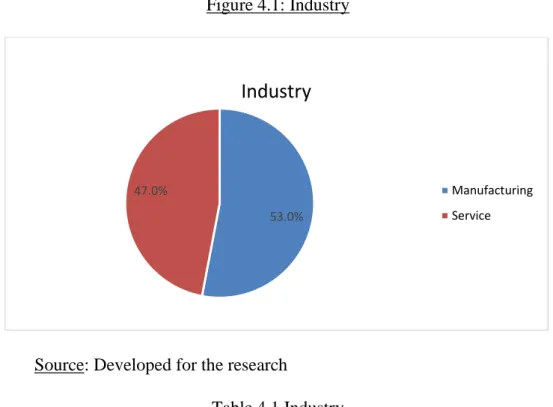
Scale Measurement
- Reliability Analysis
Inferential Analyses
- Pearson Correlation Analysis
- Multiple Linear Regression Analysis
CSE=Core Self-Evaluation, L=Leadership, IC=Information and Communication, RR=Rewards and Recognition, EE=Employee Engagement). Moreover, all the independent variables (CSE, L, IC and RR) have a positive relationship with EE which is shown by the positive value of correlation coefficient. It indicated that 68.7% of the model can be contributed by the core self-evaluation, leadership, information and communication and rewards and recognition.
Therefore, the general regression results indicated that employee engagement can be well explained by the core self-evaluation, leadership, information and communication, and rewards and recognition. The beta of CSE is 0.412, this showed that increase of one unit of CSE, the level of EE will increase by 0.412 units, other variables are constant. Increasing one unit of L while keeping other variables constant will increase the level of EE by 0.148 units.
One-unit increase in IC, other variables constant, the level of EE will rise by 0.181 units. When RR increases by one unit, the level of EE will be raised by 0.383 while all other variables remain constant.
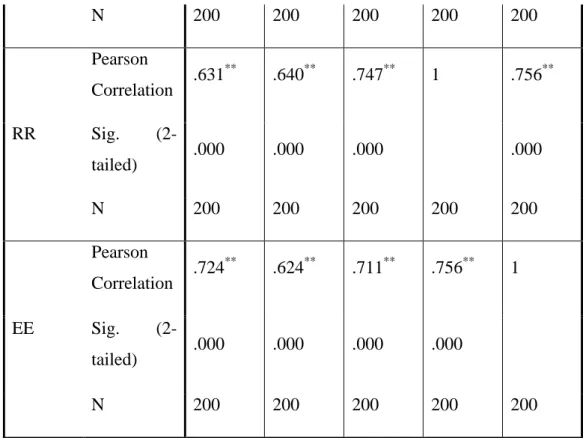
Conclusion
DISCUSSION, CONCLUSION AND IMPLICATIONS
Introduction
Summary of Statistical Analysis
- Summary of Descriptive Analysis
- Respondent Demographic Profile
- Central Tendencies Measurement of Constructs
- Summary of Scale Measurement
- Reliability Test
- Summary of Inferential Analysis
- Pearson Correlation Analysis
- Multiple Linear Regression Analysis
For the organization's operating period, the share for 11 to 20 years is 28.5%, followed by 28% who have been in business for less than 10 years. For the department of the respondents, the share of the sales and marketing department is the largest, at 23%, the lowest share is the IT department, which is 2.5%, and there are 3.5% of the other departments. The majority of the respondents are executive or senior executive, namely 46.5%, followed by 20.5% manager or senior manager and 10% director or general manager.
Regarding the age group, the majority of respondents are between 18 and 23 years old, while the respondents over 47 years old are less, 5.5%. Additionally, employee engagement has the highest standard deviation of 0.81271, while core self-esteem has the lowest standard deviation of 0.64884. These independent variables also have a strong influence on the dependent variable with a correlation value close to +1.
Discussion of Major Findings
- Relationship between core self-evaluation and employee
- Relationship between information and communication and
- Relationship between rewards and recognition and employee
H0: Information and communication are not significantly related to employee engagement in multinational companies in the service and manufacturing sector. H1: Information and communication have a significant relationship with employee involvement in multinational companies in the service and manufacturing industries. H0: Rewards and recognition have no significant relationship with employee engagement in multinational companies in the service and manufacturing industries.
H1: Rewards and recognition have a significant relationship with employee engagement at multinational companies in the service and manufacturing industries. Based on the result of multiple regressions, core self-evaluation has a significant relationship with employee engagement. H0: Leadership has no significant relationship with employee engagement in multinational companies in the service and manufacturing industries.
There are few other studies that attempt to support the relationship between leadership and employee engagement. This result showed that the significance value of rewards and recognition is 0.000, less than the p-value of 0.05 which means that the relationship between rewards and recognition and employee engagement is significant, therefore H1 is supported.
Implication of the Study
- Managerial Implications
The emotional connection of an employee and as a human being, which is expected to be accepted and valuable within the organization, will influence employee engagement (Rodrigues da Costa & Maria Correia Loureiro, 2019). Veerabramham and Kolla (2014) claim the importance of compensation, fringe benefits and formal recognition in driving employee engagement. In addition to meaningful work, a sense of return on investment can come from external rewards and recognition.
Therefore, employees will be more engaged if they receive greater rewards and recognition for their role performance (Maslach et al., 2001). These were consistent with the research finding that rewards and recognition will influence employee engagement. Determining the drivers of employee engagement and greatly improving the relevant drivers that can prevent employees from leaving the company, especially top talent who have fierce competition in the market.
Therefore, using this study, it is possible to reduce the turnover rate in the company by improving employee engagement. An example of reward and recognition will be salary increases or employee bonuses.
Limitations of the Study
- Shortage of Convenience Sampling
- Shortage of Close Ended Questions
- Questionnaires Development
When the employer understands the drivers behind employee engagement, they will implement it and the employee can have a better working environment and well-being. This study focused among employees of MNE in Klang Valley as it was the primary step for the researcher as this population was most accessible at this stage with all the available resources. However, the findings have highlighted the significant issues and may improve more large-scale studies to be conducted among other populations in the future.
In addition, the current study focused on MNE employees in the Klang Valley, and the findings may not be applicable or generalizable to other populations in Malaysia. Questionnaires as a tool of this study could limit the accuracy of the collected data, as the questions were formulated in a closed mode, which the participants themselves will have to classify into specific categories. This does not give a clear representation of the respondents as to whether they clearly understood the items or selected an option that fully explains their precise choice of answers.
The respondents took some time to complete the survey and there may have been bias in the result as the result is only based on respondent's perception. The respondents may also have made spontaneous choices about the answers without fully understanding the items.
Recommendations
- Improve in Sampling Method
- Combination of Close and Open Ended Questions (Mixed
- Questionnaires
Conclusion
The relationship between key self-reported traits—confidence, generalized self-efficacy, locus of control, and emotional stability—with job satisfaction and job performance: A meta-analysis. The benefits and potential costs of positive core self-evaluations: A review and plan for future research. Drivers of work engagement: An examination of core self-evaluations and psychological climate among hotel employees.
Malaysia's Upward Course in Employee Engagement. https://www.thestar.com.my/business/business-news aon-hewitt- malaysia-has-made-advances-in-people-issues. Drivers of employee engagement: The role of leadership style. 2011). The role of employee engagement in work-related outcomes. The interactive effect of leadership and central self-evaluations on commitment to change in the public sector.
Impact of Organizational Culture and Communication on Employee Engagement: A Study of Indian Private Banks. Retrieved August 15, 2019, from https://www.theedgemarkets.com/article/higher-employee-engagement-leads-better-business-performance-says-aon. I am conducting this study to investigate “Drivers of Employee Engagement in MNE in Manufacturing and Service Industry in Malaysia”.
